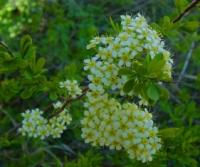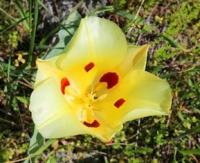Вы здесь
Flora of Sairam-Ugam Park.


Tours to tulips in Sairam-Ugam park.
“Why do you go away? So that you can come back. So that you can see the place you came from with new eyes and extra colors. And the people there see you differently, too. Coming back to where you started is not the same as never leaving”
Terry Pratchett. “A Hat Full of Sky”.
Walks in the Sairam-Ugam park.
The main types of vegetation in Sairam-Ugamsky park. Savannoid (shrub-savannah, coarse-tall, cereal, umbellars), juniper forests and woodlands (both from Zeravshan and half-spruce juniper), juniper juniper (from Turkestan juniper), deciduous-shrub, small-leaved mountain forests ( cryophytic steppes, alpine meadows and lawns, semi-shrub (mountain-xerophytic), distinctive vegetation of rocks and screes.
Rare plant communities. Juniper juniper woodlands from Zerafshan juniper, including juniper with Calophaca tianschanica, tugai forests with Afghan poplar: juniper juniper-birch forests: hemispherical juniper juniper juniper forests: small-leaved tugai juniper forests with sea buckthorn and sub-birch forest.
23 species of Red Book were recorded: including Persian mountain ash, yellow-backed shrub, yellow colchicum, Popov reptilian, Ostrovsky, Ugaman frangipani, Juno orchid, Iris Alberta, Ungernia, Turkestan cornflower, Severtsov pseudo-desert grate (Kolodyakova soviet point of the park) . Among the 76 endemic species, several are rare, noted only in this area.
The habitat of many Red Book species of birds and mammals: black stork, golden eagle, bearded beak, Saker falcon, dwarf eagle, chahin, vulture, serpent eagle owl, eagle owl, blue bird, groundhog Menzbir, snow leopard, Tien-Shan bear, marten, roe deer and wild boar.
Existing infrastructure and activities. The main problems and threats. Livestock grazing leads to severe disturbance of natural pastures. Widely developed poaching, including on the groundhog Menzbir. They get bears and snow leopards.
Deforestation and fires of anthropogenic origin destroy both massive areas and individual thickets of trees and shrubs, especially at the upper limit of their distribution.
Authority:
http://www.sugnpp.kz
Photos
Alexander Petrov.







